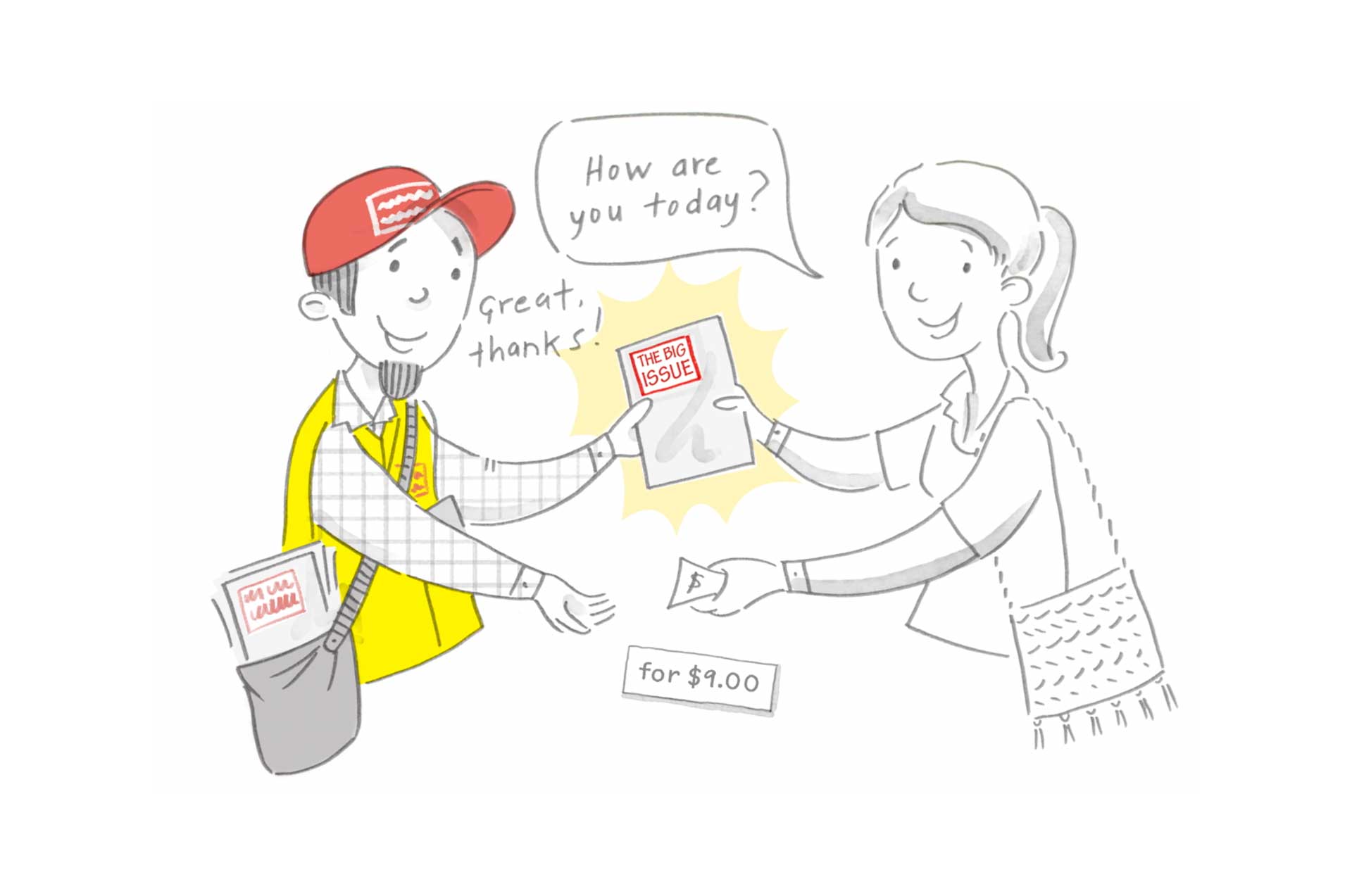
Explaining a Complex Idea
How an initial idea to fill unsold ad slots in a magazine evolved into a national multi-media campaign.

How an initial idea to fill unsold ad slots in a magazine evolved into a national multi-media campaign.

The Big Issue is a not-for-profit social enterprise dedicated to supporting and creating work opportunities for homeless, marginalised and disadvantaged people. They are best known for their fortnightly, independent magazine, which is sold on the streets by vendors.
These vendors are not asking for charity. By selling the magazines, they are running a microbusiness, and The Big Issue is helping them to help themselves. Unfortunately, this concept is not well understood by the general public.
During this phase, we ran a couple of workshops that helped us to really understand the audience, the key message, and get everyone aligned.
With an understanding of the outcome, we explored several ways to communicate the value exchange, including in comic form. The “make/sell/buy” cycle evolved from these early sketches.
Once we had settled on the key players in the diagram, and the transactions between them, the client socialised the model with vendors, staff and customers, to check that it resonated.
With the final artwork was ready for print, discussions began about making a video version of the model, for display online, in cinemas, and on billboards in Melbourne’s CBD!
Since creating the diagram and accompanying video, The Big Issue has raised its prices a couple of times. We’ve supported the campaign by updating the imagery and video accordingly.
We met with the client and workshopped ways that the concept could be communicated. Our empathy forecast activity helped to elicit some of the assumptions made by members of the public, and the internal conversations that vendors have. This helped to extract multiple layers to the message, including:
We explored the possibility of communicating this message, and the unique business model, as a comic strip. After several iterations, we hit upon the concept of a single diagram depicting what is a virtuous cycle: make → buy → sell.
The final image combined scenes from the original comic strip with the diagram depicting the cycle, with the vendor pictured at the centre of the process. We delivered portrait and landscape versions of the diagram, so that the magazine publishing team could fill half- or full-page slots when there were advertising slots that had not been sold.
The image was an absolute stand-out success, and led to additional work with The Big Issue for us to evolve the concept into an animated video. What began as a simple diagram to fill pages in the magazine in lieu of advertising slots evolved into a multi-media campaign that was screened nationally on free-to-air television, cinemas, and large outdoor displays in Melbourne’s CBD, as well as continued reach via The Big Issue’s various social media channels.
But the real impact was a growth in confidence in vendors, which came from them having a tool to clearly explain that they were not seeking charity, but were in fact running a microbusiness.
Our market-leading Feelin’ Sketchy newsletter is an invaluable source for visual thinking, analysis and learning. No fluff. No special offers involving steak knives. Just great content.
We never spam, our promise!